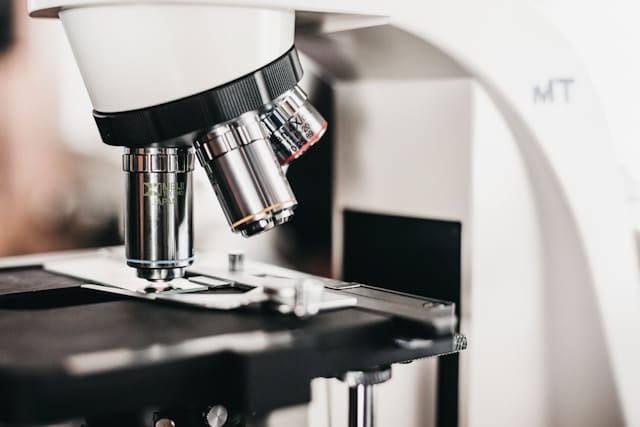Inductively Coupled Plasma Optical Emission Spectroscopy (ICP-OES) is a powerful analytical technique used in laboratories for the detection and quantification of elements in various sample types.
Choosing the right ICP OES instruments for your laboratory is crucial to ensuring efficiency, accuracy, and cost-effectiveness. With multiple models available, each with different capabilities and configurations, understanding the key factors that influence your choice can help you make an informed decision.
Understanding ICP-OES Technology
ICP-OES operates by introducing a sample into a high-temperature plasma, where elements emit light at characteristic wavelengths. The emitted light is analyzed to determine the concentration of elements in the sample. This technique is widely used in environmental analysis, pharmaceuticals, metallurgy, food safety, and petrochemicals due to its high sensitivity and multi-element detection capability.
Key Considerations for Choosing an ICP-OES Instrument
Application Requirements
The first step in selecting an ICP-OES instrument is identifying the specific application requirements of your laboratory. Consider the following questions:
- What types of samples will you be analyzing (e.g., water, soil, biological, industrial)?
- What elements do you need to detect, and at what concentrations?
- Do you require simultaneous or sequential analysis?
If your laboratory handles complex matrices with high levels of dissolved solids, you may need an instrument with a robust plasma system that can withstand such samples.
Axial vs. Radial View
ICP-OES instruments come in two optical viewing configurations:
- Axial view: Offers higher sensitivity and lower detection limits, making it ideal for trace element analysis.
- Radial view: Provides better tolerance to high matrix samples and minimizes interferences, making it suitable for industrial and environmental applications.
- Dual-view systems: Offer flexibility by allowing users to switch between axial and radial modes, optimizing analysis based on the sample type.
Detection Limits and Sensitivity
The detection limits of the instrument should align with your laboratory’s analytical needs. Some applications, such as environmental monitoring and pharmaceutical analysis, require ultra-low detection limits, making high-sensitivity instruments necessary.
Sample Throughput and Automation
Laboratories with high sample loads should consider ICP-OES instruments with:
- High-speed analysis capabilities
- Autosamplers to increase efficiency
- Rapid warm-up and stabilization times
- Software that enables batch processing and automated data handling
If your lab needs to process hundreds of samples daily, an instrument with robust automation features will save time and reduce manual errors.
Software and Data Handling
User-friendly software is essential for efficient operation and data management. Look for software that offers:
- Intuitive interfaces for easy method development
- Real-time data monitoring
- Advanced calibration and interference correction algorithms
- Compliance with regulatory standards (e.g., EPA, FDA, USP)
Instrument Size and Space Constraints
The physical size of the instrument is another critical consideration, especially for smaller laboratories. Bench-top ICP-OES models are available for labs with limited space, while high-throughput labs may require larger floor-standing units.
Operating Costs and Maintenance
The total cost of ownership extends beyond the initial purchase price. Consider:
- Argon consumption: ICP-OES systems require argon gas, and instruments with lower gas consumption can significantly reduce operating costs.
- Maintenance requirements: Some models require more frequent cleaning and component replacements.
- Durability and serviceability: Ensure that replacement parts and technical support are readily available.
Compliance with Regulatory Standards
If your laboratory operates under regulatory guidelines, choose an ICP-OES instrument that meets compliance requirements. Industries such as environmental monitoring, pharmaceuticals, and food safety have specific standards for analytical instruments.
Top ICP-OES Manufacturers and Models
Several leading manufacturers produce high-quality ICP-OES instruments, including:
- Agilent Technologies: Known for high-performance models with excellent sensitivity and software integration.
- PerkinElmer: Offers robust and reliable systems with low operating costs.
- Thermo Fisher Scientific: Provides instruments with dual-view capabilities and advanced automation features.
- Shimadzu: Specializes in user-friendly systems with high analytical precision.
- Horiba: Features compact designs and cost-effective solutions for routine analysis.
Making the Final Decision
Before purchasing an ICP-OES instrument, request demonstrations or trial runs with your sample types. Evaluate vendor support, warranty options, and training programs. Investing in the right instrument tailored to your laboratory’s needs will enhance analytical accuracy, increase efficiency, and optimize operational costs.
Conclusion
Selecting the right ICP-OES instrument requires careful consideration of application needs, optical configuration, throughput, operating costs, and compliance with industry standards. By assessing these factors, laboratories can ensure they invest in an instrument that meets their analytical demands while maximizing performance and cost-effectiveness.
The New Jersey Digest is a new jersey magazine that has chronicled daily life in the Garden State for over 10 years.
- Staffhttps://thedigestonline.com/author/thedigeststaff/
- Staffhttps://thedigestonline.com/author/thedigeststaff/
- Staffhttps://thedigestonline.com/author/thedigeststaff/
- Staffhttps://thedigestonline.com/author/thedigeststaff/


